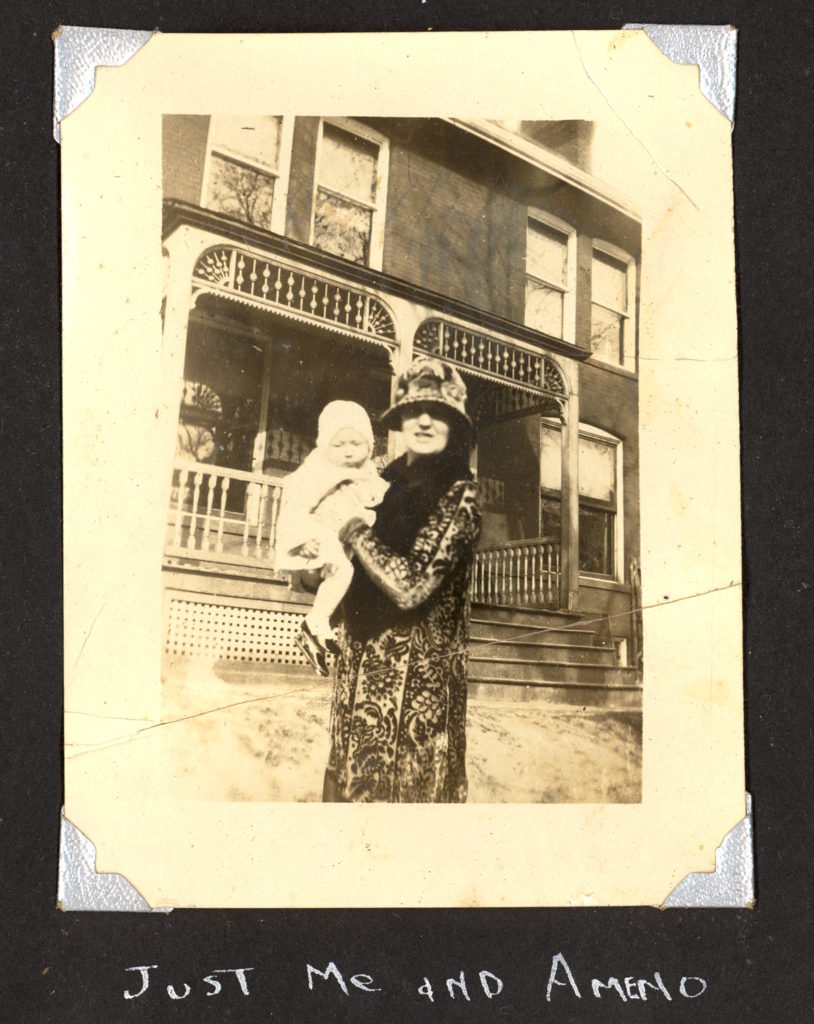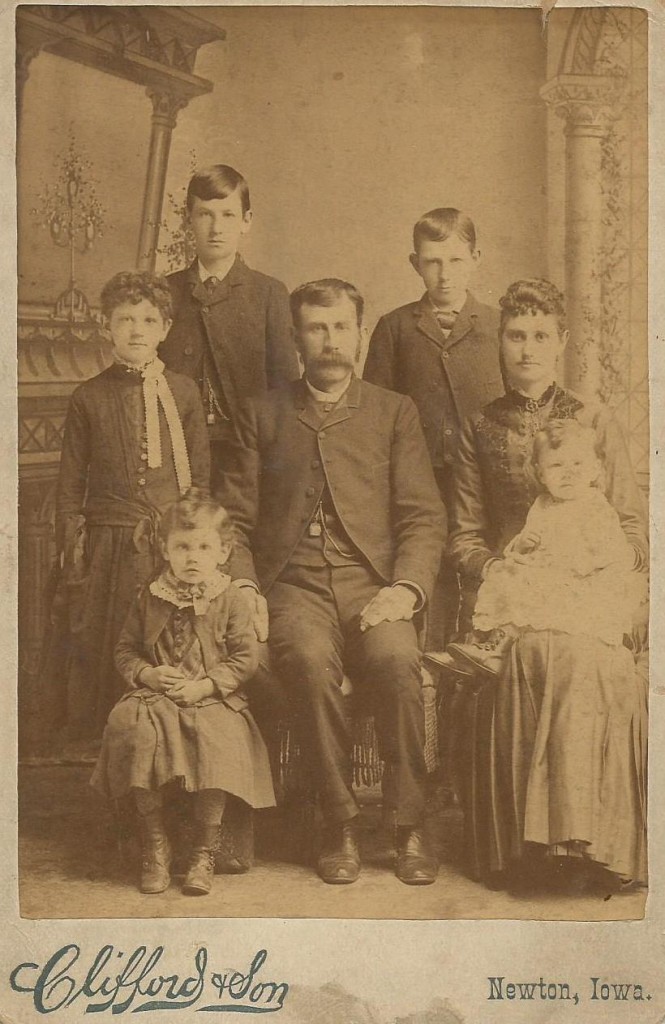Travel Tuesday: Edward A. McMurray, Jr., in South Dakota

McMurray Family (Click for Family Tree)
Ed McMurray, Jr., sometimes spoke of going out to camp over the summer in South Dakota. It may have been a Boy Scout camp, or just a camp for boys- the memories are hazy now, because they weren’t written down twenty years ago. (Argh.) His dad, Dr. Edward A. McMurray, Sr., paid for camp for a couple of summers. Ed Jr. did love it- except, of course, having to jump in the cold mountain stream in the morning instead of taking a shower. He did say, however, that was quite effective in waking them up!
Finding this image in his photo album was very exciting. Do you notice anything missing in the picture of Mt. Rushmore? Maybe two Presidents?
This image really helps us date these photos. The carving of Washington (far left as we look at the mountain) was dedicated on 4 July 1930, and Jefferson (second from left) on 30 August 1936. The Lincoln figure (which will be on the far right) was dedicated next, on 17 September 1937, and Roosevelt (to the right of Jefferson) on 2 July 1939. So we know the image was taken sometime after 1930, when Washington was finished, and before 1937, as it seems the Lincoln face has not even been started. It does look like they have started work on the Roosevelt figure, but maybe more research will tell us exactly when the carving was at this stage. (There are some other timelines on the internet, but it has been hard to determine their sources of information for accuracy.)
Interestingly, Jefferson was carved originally to the left of Washington. Gutzon Borglum, the sculptor, did not like the way it looked, so had dynamite taken to the head, and then carved Jefferson to the right of Washington.
To me, it seems like Mr. Jefferson needs a bit of finishing up, so I am wondering if this might have been the summer of 1936, not long before the dedication. Wonder if Ed and his buddies were there to see President Franklin D. Roosevelt give the dedication speech?
And way to go, Ed, with your picture-taking! I have not found another image like this on the internet, though it seems there should be one somewhere…
Stay tuned for more summer travel pics!
Notes, Sources, and References:
- Edward A. McMurray, Jr.’s photo album.
- Mt. Rushmore National Memorial, South Dakota Timeline– https://www.nps.gov/moru/learn/historyculture/timeline.htm
- Mt. Rushmore Historic Photos– https://www.nps.gov/media/photo/gallery.htm?id=F47518BA-155D-4519-3E3F35CAD0584ADE
- “Construction of Mount Rushmore,”- Wikipedia– https://en.wikipedia.org/wiki/Construction_of_Mount_Rushmore
Click to enlarge any image. Please contact us if you would like an image in higher resolution.
We would love to read your thoughts and comments about this post (see form below), and thank you for your time! All comments are moderated, however, due to the high intelligence and persistence of spammers/hackers who really should be putting their smarts to use for the public good instead of spamming our little blog.Original content copyright 2013-2018 by Heritage Ramblings Blog and pmm.
Family history is meant to be shared, but the original content of this site may NOT be used for any commercial purposes unless explicit written permission is received from both the blog owner and author. Blogs or websites with ads and/or any income-generating components are included under “commercial purposes,” as are the large genealogy database websites. Sites that republish original HeritageRamblings.net content as their own are in violation of copyright as well, and use of full content is not permitted. Descendants and researchers MAY download images and posts to share with their families, and use the information on their family trees or in family history books with a small number of reprints. Please make sure to credit and cite the information properly, i.e, reference this blog. Please contact us if you have any questions about copyright or use of our blog material.




